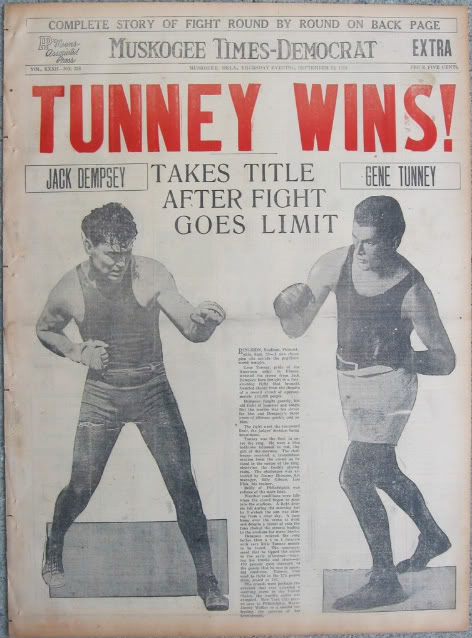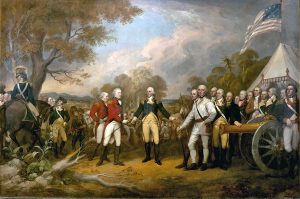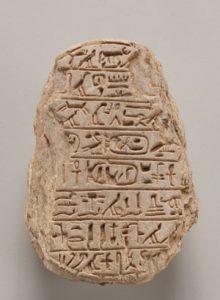Boxing has been part of American culture since the early 1800s. The popularity and notoriety of boxing comes from the legendary characters and fights in its illustrious history. Legendary men such as Floyd “Money” Mayweather, “Sugar” Ray Robinson, Muhammad Ali, “Smoking” Joe Frazier, and Ezzard Charles have produced timeless classics. Bouts such as “the Trilla in Manila” and “Sugar Ray Leonard vs. Roberto Duran II” are a constant reminder of boxing’s grandeur and appeal. However, there was one fight that preceded these and is still as relevant and important as it was when it occurred.1 This bout is known as “The Long Count Fight.” The two characters of this legendary tilt were Jack Dempsey and Gene Tunney.

Dempsey and Tunney were two of the best fighters of the 1920s and each went on to have hall of fame careers. Jack Dempsey was known as the “Manassa Mauler” and was regarded as the people’s champion for his gritty fighting style and charismatic charm. His counterpart, Gene Tunney, was a retired Marine, who was regarded as an intellectual and thus went about boxing with a cerebral and surgical approach.2 These two had met in the ring in September of 1926, and Tunney had been the victor. However, Dempsey was as determined and hungry as ever for another chance to triumph over Tunney. Their rematch the following year would be legendary.
The Long Count Fight was fought on September 22, 1927, and it was fought at Soldier Field in Chicago. Prior to this fight, there had been a new rule implemented that stated that if a combatant was knocked down, the aggressor had to go to a neutral corner before the referee could begin the ten count, which would determine whether the match was over or whether it could resume.3 This rule is what made this fight so controversial.
The first six rounds were going in Tunney’s favor. He was besting Dempsey and the physical toll boxing had taken on Dempsey’s body was beginning to show. It was beginning to look like a repeat of their first encounter. The sixth round was over and the fight was looking like a victory for Tunney; that is, until the fateful seventh round arrived. In the seventh round, Dempsey knocked Tunney down to the mat. However, the referee did not start counting until Dempsey went to a neutral corner, which gave Tunney an extra seven to eight seconds to recover. Dempsey hadn’t been used to the new rule, and as a result, for the rest of that round, Tunney was able to avoided Dempsey. For the rest of the fight, Tunney held his lead on points, even though the crowd showered Tunney with boos for having taken advantage of the long count.4 The crowd also cheered for their man Dempsey until the bitter end. Unfortunately, Tunney was able to avoided Dempsey for the rest of the fight, and eventually won on points. After this fight, one of the greatest heavyweight fighters of all time, Jack Dempsey, retired.
Many believed that the fight had been rigged by way of the referee; others believed that gangsters, such as Al Capone, had influenced the fight.5 In fact, Jack Dempsey once stated “I positively was approached by people in Chicago. I was, in fact, told that for $100,000, I could win the heavyweight championship.”6 Although marred by controversy, neither of those speculations have been definitively proven. But there are many who contend that Dempsey should have been the rightful winner and not Tunney. While the record books will say that Tunney won, it will not be without a metaphorical asterisk. Although Dempsey lost, he was remembered by many as a people’s champion while Tunney was vilified for his role in the match, but still highly respected for his boxing style. Years after this fight, Tunney and Dempsey became close friends and both went on to be boxing Hall of Fame members.7 Both were, are, and forever will be intertwined due to the controversial Long Count Fight.
- Roger Kahn, A Flame of Pure Fire: Jack Dempsey and the Roaring ’20s (New York: Harcourt Brace & Co, 1999), 86. ↵
- Roger Kahn, A Flame of Pure Fire: Jack Dempsey and the Roaring ’20s (New York: Harcourt Brace & Co, 1999), 86. ↵
- Bobby Bearden, “The Time Tunnel: 75th Anniversary of ‘The Long Count,'” Boxing 247, no. 1 (March 2017): 1. ↵
- Roger Kahn, A Flame of Pure Fire: Jack Dempsey and the Roaring ’20s (New York: Harcourt Brace & Co, 1999), 422. ↵
- Bobby Bearden, “The Time Tunnel: 75th Anniversary of ‘The Long Count,'” Boxing 247, no. 1 (March 2017): 1. ↵
- Jack Dempsey, “In This Corner,” Saturday Evening Post 204, no. 9 (August 29, 1931): 25–38. ↵
- Roger Kahn, A Flame of Pure Fire: Jack Dempsey and the Roaring ’20s (New York: Harcourt Brace & Co, 1999), 422. ↵



65 comments
Daniel Linstead
I found this article interesting to read. I personally enjoy boxing, I like the hype that it brings, the build up waiting for the big result. I personally still think that fights being rigged still exists to this day. For example, the Mayweather, and McGregor fight has controversy over if that was rigged. It is suggested that it was because the payout for McGregor would have caused a financial melt down. So if I had to personally make a judgement on weather this fight was rigged or not I believe it would have been.
William Rittenhouse
Very interesting article on one of the greatest match ups ever in the history of boxing. There is such an amazing draw to boxing like you said. It’s teeth gritting moments always have viewers holding their breaths. I think its funny how much the rules had a factor in that fight. Now we still complain about rules that make sports less competitive and more of a referred spectacle. Great article though.
Nathan Hartley
I enjoy boxing, however I don’t know much about it’s history or rules. I have never heard of this rule before, but I can see how it is so controversal. As a referee, especially in fighting sports, the goal is for the fight to go smoothly without one participant getting seriously injured or killed. If you have one of the contenders dancing around the ring and causing a distraction, keeping someone safe becomes that much more difficult. However, it also hardly seems fair that he was given an extra 7-8 seconds to get up when knocked down. I really enjoyed this article and I will be sure to look more into the rules of boxin on ym own.
Caden Floyd
I know I would surely rig the fight is the notorious Al Capone approached me prior. However, I don’t believe is is right that they changed the rules just before their fight. They should have given Tunney a better shot at redemption and had them fight with the same rules that were enforced in the first fight. I had actually never heard of “The Long Count Fight” before reading this article, but I feel like I could talk about it with anyone now. This was a very informative and interesting article and now I am motivated to youtube this controversial fight to learn even more.
Fumei Pinger
I thought the timing of the neutral corner count rule seemed controversial especially after reading the end of the article when Dempsey said he was approached for $100,000 to rig the fight. If I were to feed into the conspiracy of whether the match was won fair and square, I would question the implementation of this rule on the day of such a big fight.
Edgar Ramon
A time in which 16 oz gloves were unheard of. They say boxing like they did made you more efficient and economical on the use of your punches, since you could break your hand if you went in too eager. Dempsey the ‘Mauler’ was the classic Rocky Marciano, Joe Lewis hall of fame type character, although he did not look like those beheameths, and he represents the fighting spirit in many ways. I mean boxing was not nearly as lucrative then, and the rules did not ensure your safety. I really enjoyed this article.
Tyler Thompson
This was a interesting article, and I think it’s weird to believe that the second fight would have finished so much faster in favor of Tunney, if the new rule had not been implemented. It was probably devastating for Dempsey, because everyone had faith that he would succeed again in this duel. However, we many never know if corruption and bribing was involved, and who the true winner of the fight could have been.
Jose Figueroa
While I never go out of my way to watch boxing, I am always interested in watching fights when ever they do pop up. Prior to reading this I had no idea who Tunney or Dempsey were. Dempsey who is the “peoples champion” kind of reminded of the Mexican boxer Canelo Alvarez who is loved by his Mexican fan base. Tunney reminds of Maywhether who often gets ridiculed for his passive fighting style. I would have also found the long count as an unfair rule since it gives the person knocked down so much extra time.
Julio Morales
I watch quite a bit of boxing and I think that they should have had a trilogy. A great example is the Marquez and Pacquiao fight which had to go to 4 fights before Marquez had to lay Pacquiao out. It looks to me like Tunney won both fights fair and square because a rule is a rule. It wasn’t just made up on the spot, these two fighters were informed prior to the fight and Dempsey made a mistake that cost him the victory.
Elias Garza
For a while, I begged my mom to put me in boxing as a kid but she never budged. I love the sport of boxing. I was never a boxer but I enjoyed boxing with friends and watching fights on paper view whenever they came out. In fact, this article reminds me of the paper view fight I saw with Canelo. This fight was special because this night was the night my brother in law had proposed to my sister. In conclusion, this article brought back great memories and I enjoyed it very much.